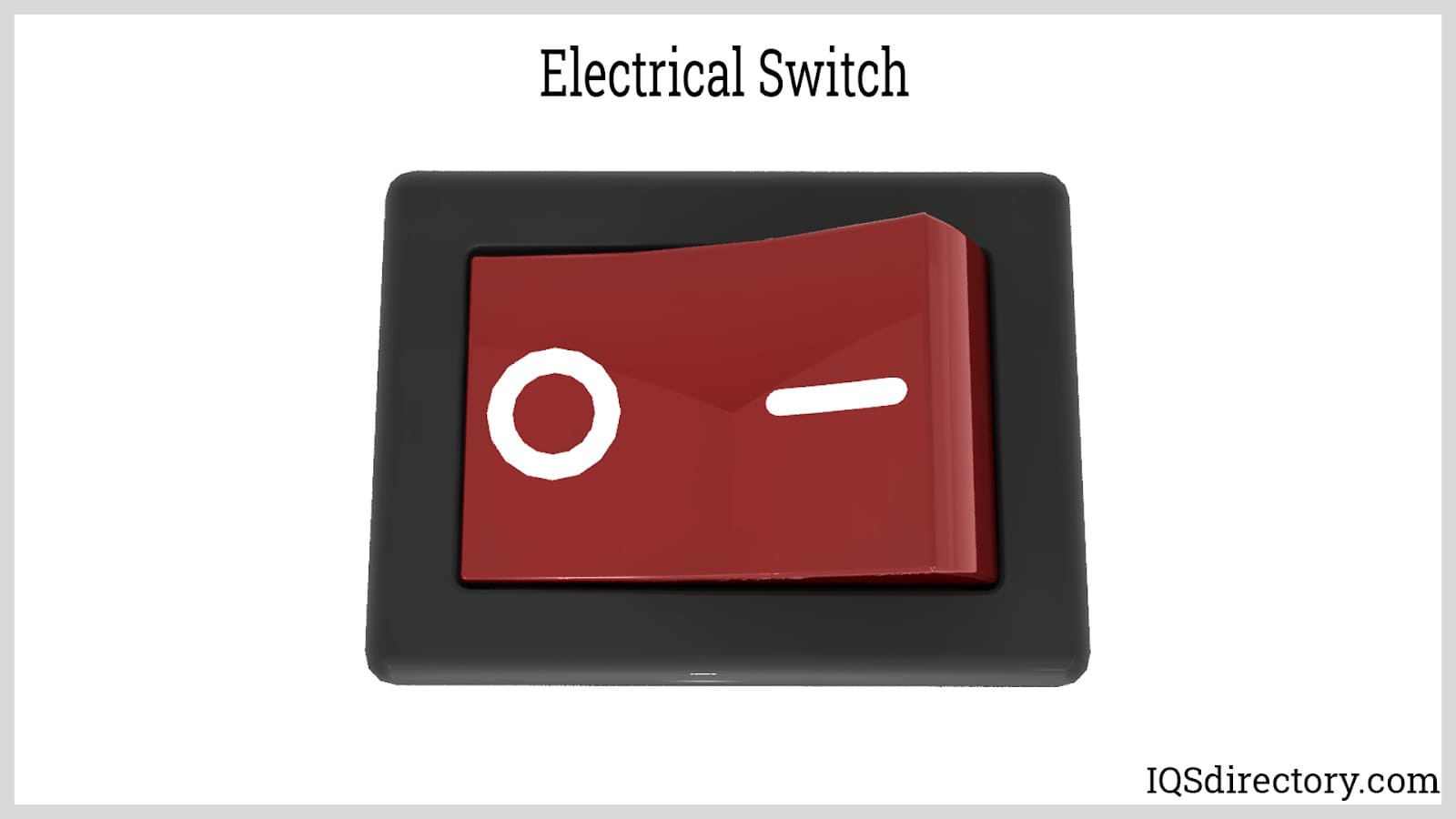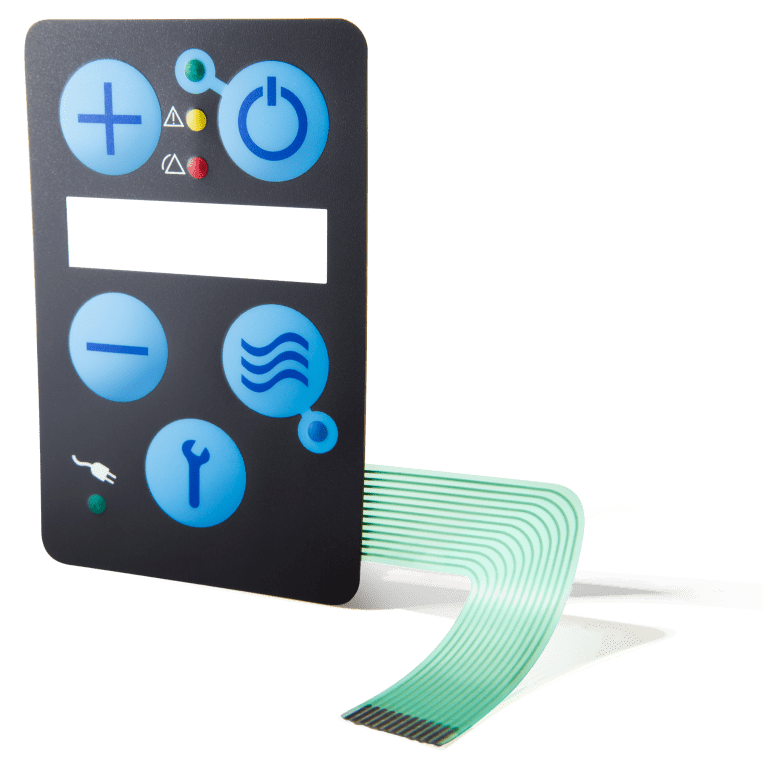Recognizing the Value of Membrane Layer Switch in Modern Electronic Devices
Membrane switches are integral parts in contemporary electronic gadgets. They supply a blend of capability and design that boosts individual communication. Their sturdy and lightweight nature makes them ideal for numerous applications. As markets develop, the demand for customization and progressed functions grows. Recognizing just how membrane switches over add to development discloses their relevance fit the future of electronics. What exists ahead for this modern technology?
The Fundamentals of Membrane Layer Change Technology
Although commonly ignored, membrane button technology plays an essential duty in the modern electronic devices landscape - membrane switch. These gadgets, made up of multiple layers, serve as interface for different digital products, ranging from house home appliances to clinical equipment. A normal membrane layer button consists of a visuals overlay, a spacer layer, and a circuit layer, which are thoroughly put together to develop a practical interface.When pressure is used to the overlay, the circuit layer is completed, permitting signals to be transferred to the tool. This technology is understood for its versatility, allowing modification in form, capability, and design to fulfill specific user requirements. Furthermore, membrane layer switches are thin and lightweight, making them suitable for applications where area is a costs. Their sturdiness and resistance to ecological factors additionally boost their appeal, guaranteeing they can hold up against severe problems while maintaining capability. In general, membrane layer button modern technology is integral to producing effective and easy to use electronic devices

Secret Advantages of Membrane Layer Switches Over
Membrane switches deal a number of crucial advantages that make them a preferred selection in different electronic applications. Their layout permits a small form aspect, allowing manufacturers to develop light-weight and sleek tools. Furthermore, membrane buttons are resistant to dirt, moisture, and chemicals, which boosts their sturdiness and longevity sought after environments. The responsive responses supplied by these switches can improve user experience, making them very easy and intuitive to operate.Furthermore, membrane switches can be tailored with diverse graphics and shades, permitting special branding opportunities. The production process is normally cost-effective, particularly for high-volume production, as it decreases setting up time and simplifies layout. Membrane changes need minimal maintenance, contributing to lower total functional prices. These advantages highlight their expanding appeal in modern-day electronics, where reliability and straightforward interfaces are crucial.

Applications Across Various Industries
The versatility of membrane layer switches over allows their extensive adoption throughout different sectors. In the medical area, they are frequently used in analysis devices and patient surveillance systems, providing a durable user interface resistant to pollutants. The automotive sector utilizes membrane layer switches for dashboard controls, boosting individual experience with streamlined styles that hold up against severe problems. In consumer electronic devices, they act as control board for devices such as microwaves and coffee makers, giving an easy to use interface that is simple to tidy. The aerospace industry utilizes membrane layer switches in cockpit controls, where integrity and space effectiveness are paramount. Furthermore, the commercial sector leverages these switches in equipment and control systems to assure robust operation popular environments. This wide variety of applications highlights the adaptability of membrane switches, making them important parts in enhancing performance and user interaction across diverse technical landscapes.
Modification and Design Flexibility

Future Trends in Membrane Switch Development
Emerging fads in membrane layer button advancement suggest a growing emphasis on boosted capability and assimilation with wise innovations. As consumer demand for extra innovative digital gadgets increases, makers are concentrating on producing membrane layer switches over that not only serve standard operational roles however additionally incorporate attributes like touch level of sensitivity, backlighting, and haptic feedback.Furthermore, developments in materials are anticipated to improve resilience and environmental resistance, making membrane layer changes suitable for diverse applications in sectors such as medical care, automobile, and consumer electronic devices. The combination of capacitive touch technology is most likely to become extra common, enabling sleeker layouts and enhanced customer interfaces. membrane switch.Additionally, the increase of the Internet of Things (IoT) is prompting the advancement of membrane changes that can communicate wirelessly with various other devices, boosting interconnectivity. In general, the future of membrane layer switch modern technology appears appealing, driven by development and the search of user-friendly remedies
Frequently Asked Concerns
How Do Membrane Switches Over Compare to Standard Mechanical Buttons?
Membrane buttons, being extra space-efficient and providing a streamlined design, contrast with typical mechanical buttons that give tactile responses. The former commonly feature adjustable graphics, while the last usually ensure longevity and dependability in numerous applications.
What Products Are Typically Used in Membrane Change Manufacturing?
Membrane layer switches are usually generated making use of materials such as polyester, polycarbonate, and printed conductive inks. These materials supply responsiveness, longevity, and adaptability, making them suitable for various applications in electronic devices and interface.
Can Membrane Switches Be Repaired or Reused?
Membrane switches can frequently be repaired, specifically if small problems occur, such as adhesive failing or surface area damage. Full reuse is normally limited due to wear and possible destruction of materials over time.
Exactly How Do Environmental Factors Affect Membrane Switch Performance?
Ecological aspects, such as direct exposure, temperature, and moisture to chemicals, substantially influence membrane layer switch efficiency. Severe conditions can bring about deterioration, influencing responsiveness and durability, inevitably jeopardizing the capability of the device in different applications.
What Is the Typical Life-span of a Membrane Layer Switch?
The normal lifespan of a membrane you could try this out button generally ranges from 1 to 5 million actuations, relying on factors such as usage regularity, environmental conditions, and the products used in production, influencing sturdiness and efficiency longevity. A common membrane layer button is composed of a graphic overlay, a spacer layer, and a circuit layer, which are carefully constructed to create a functional interface - membrane switch.When stress is used to the overlay, the circuit layer is finished, permitting signals to be transmitted to the gadget. The responsive comments given by these switches can enhance user experience, making them very easy and instinctive to operate.Furthermore, membrane switches can be customized with diverse graphics and colors, allowing for unique branding opportunities. As consumer demand for more sophisticated electronic devices increases, producers are focusing on producing membrane switches that not only serve basic operational duties yet additionally include attributes like touch level of sensitivity, backlighting, and haptic feedback.Furthermore, innovations in products are anticipated to boost longevity and ecological resistance, making membrane layer switches over appropriate for diverse applications in industries such as healthcare, automotive, and customer electronic devices. The combination of capacitive touch innovation is likely to become much more widespread, permitting for sleeker styles and improved individual interfaces.Additionally, the increase of the Internet of Points (IoT) is motivating the development of membrane layer changes that can interact wirelessly with other tools, enhancing interconnectivity. Membrane buttons, being more space-efficient and offering a streamlined layout, comparison with traditional mechanical switches that give responsive feedback